
Who says wallpaper is just for the wall? Designers are applying it to ceilings and furniture, painting on it, and cutting out elements of it and appliquéing it onto other papers. Any spot that needs a blast of color or a zip of pattern is fair game.
“Especially for rooms with little or no architectural interest, it’s amazing how transformative wallpaper can be,” says Dennis Brackeen (dennisbrackeen.com), principal of Moxie Interiors in Houston. “People overlook the ceiling, but it can be the perfect opportunity to add an additional layer of significance within a space.” For this morning room at the Kips Bay Decorator Show House in Dallas, Brackeen swathed the walls with Jim Thompson’s Palampore wallpaper (jimthompsonfabrics.com) and selected the matching fabric for the drapes. On the ceiling is Schumacher’s Palladio Trellis pattern (fschumacher.com), onto which MJ Atelier (mjatelier.com) of Van Nuys, California, painted a frieze motif of snakes.
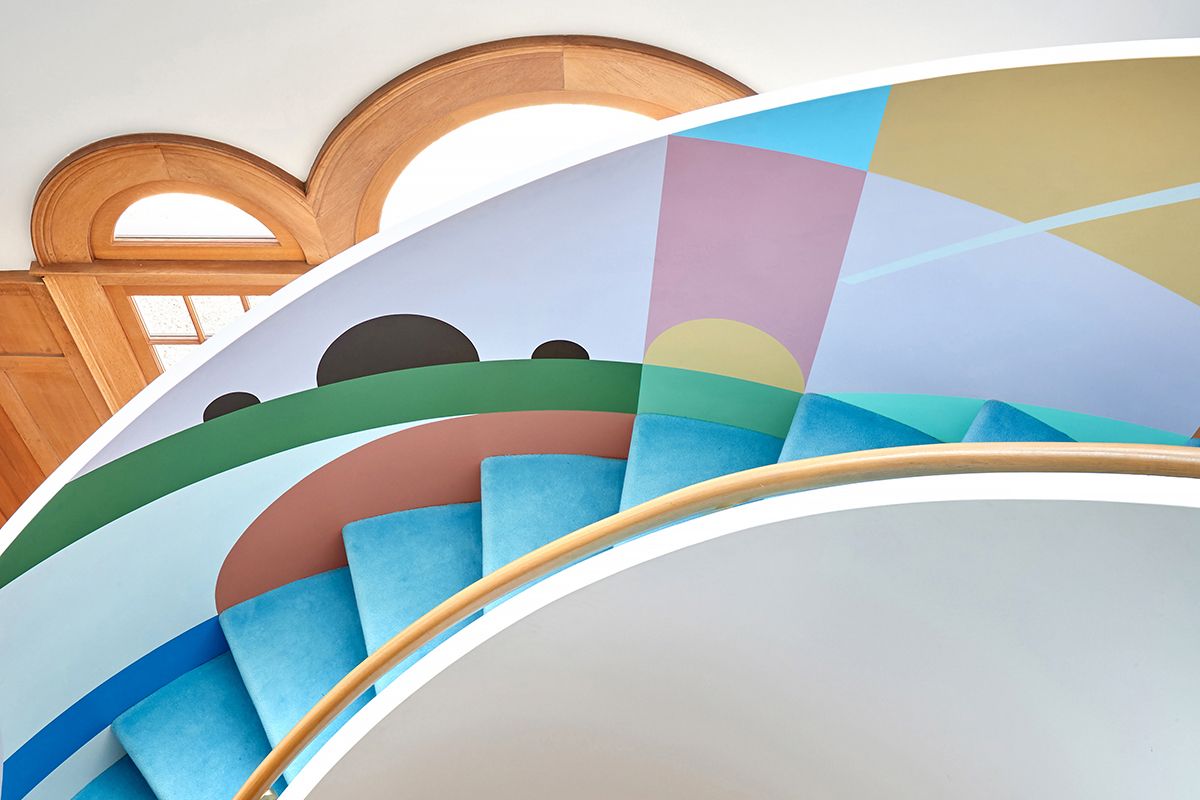
New York designer Ghislaine Viñas (ghislainevinas.com) is one of the most adventurous designers working today. Her spaces are bright, colorful, and eccentrically modern. And they’re fun! Long a fan of wallpaper, she uses it in many ways: continuing broad, horizontal orange and white stripes from wall onto ceiling in a bedroom; covering the ceiling of a dressing room; as seen here, accenting the inside of a plaster-walled spiral staircase. Okay, confession: The stairwell is actually not wallpaper, but a mural painted by Los Angeles artist Adrian Kay Wong (adriankaywong.com). You get the idea though; this example is a perfect application for wallpaper—providing a moment of surprise that’s not immediately obvious, only revealing itself on the ascent to the upper floors.
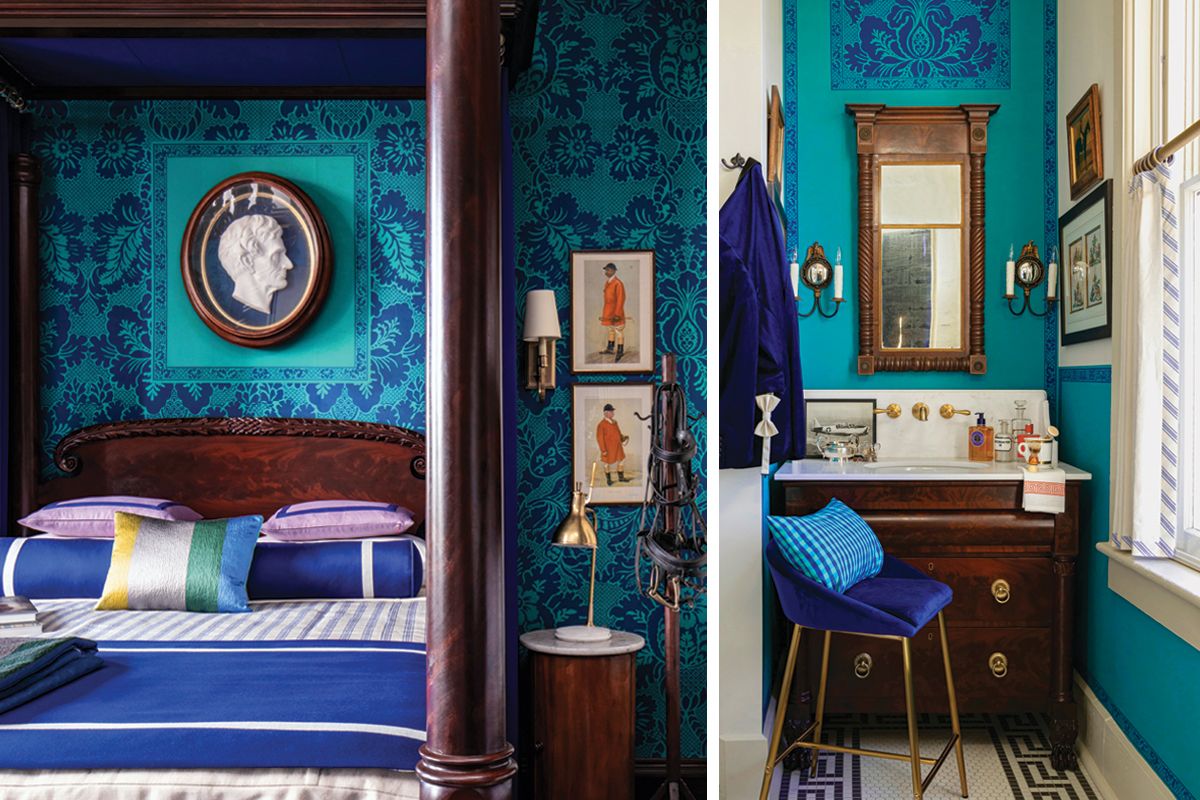
One way to lure a historic room into the 21st century is to custom-color document patterns with a modern sensibility. While restoring Blosser House, a mid-19th-century homestead in Malta Bend, Missouri, Kansas City–based designer and decorative arts historian Kelee Katillac (heartlandhistorichomes.com) worked with Adelphi Paper Hangings (adelphipaperhangings.com) to recast the company’s historic handblocked Walpole Damask. This paper was originally produced in 1756 for Strawberry Hill House & Garden (strawberryhillhouse.org.uk), among Britain’s finest examples of Georgian Gothic revival architecture. “As a canvas painter myself,” says Katillac, “I invent new palettes for the handblocked process. Walpole is one of over 20 patterns I’ve recolored for Adelphi.” One of the Blosser descendants had kept peacocks on the property, so Katillac had it produced as a royal blue pattern set in a peacock blue field. She used it conventionally on the walls, but in the suite’s bath she extrapolated elements to create borders that frame white negative space, thereby making its decorative application feel lighter.

Murals have never been more popular. The UK-based Wallsauce (wallsauce.com) offers many, all made to measure to ensure minimal waste. The peel-and-stick wallcoverings are 100 percent recyclable, as is the packaging, and they use environmentally friendly inks for printing. Some of the latest designs are by Ukrainian artist Marina Stupakova. Hanging Gardens (above) features morning glories, passion flowers, allium, orchids, and other blossoms arranged around the frame. Primula highlights cosmos, chives, lilies, bluebells, agapanthus, and more, which sprout from the baseboard near the floor and rise luxuriantly toward the ceiling. Even when it’s wintry outside, the feeling of spring remains.

If you prefer an artistic masterpiece but can’t afford a Kandinsky or a Mondrian, the Tate Collection from Graham & Brown (grahambrown.com) reproduces famous canvases by artists in the venerable museum’s collection, including Turner, Constable, Van Gogh, Whistler, Monet, and, yes, Kandinsky and Mondrian. Eras and styles cover everything from Rococo to modern abstraction. Shown are a dynamic abstract composition by Jessica Dismorr (Above, an English painter of the early to mid 1900s) and Turner’s The Blue Rigi from 1842.
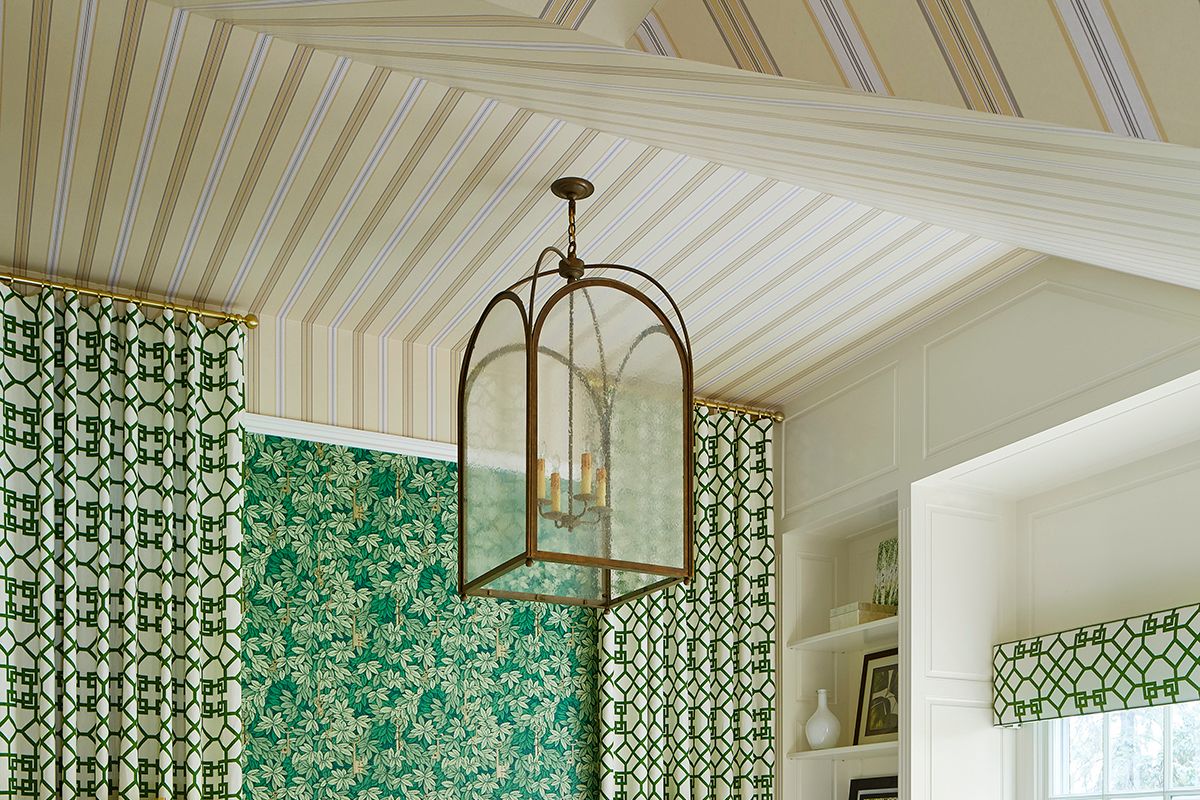
Another vibrant technique is to mix wallpapers in a single space. “When mixing wallpaper patterns, I start by choosing a ‘lead character’ that serves as the focal point to the room,” explains designer Corey Damen Jenkins of this bedroom. “I then determine wallpapers that I think of as being the ‘supporting characters.’ The composition, scale, and tone should differ from one to the next. As an example, the classic yet rigid stripe pairs well with a floral wallpaper for a cohesive contrast.” Here the Oscar for leading player—albeit in a cameo role—goes to the Cole & Son floral (cole-and-son.com) and in the supporting role: Ralph Lauren Home’s stripe (ralphlaurenhome.com)
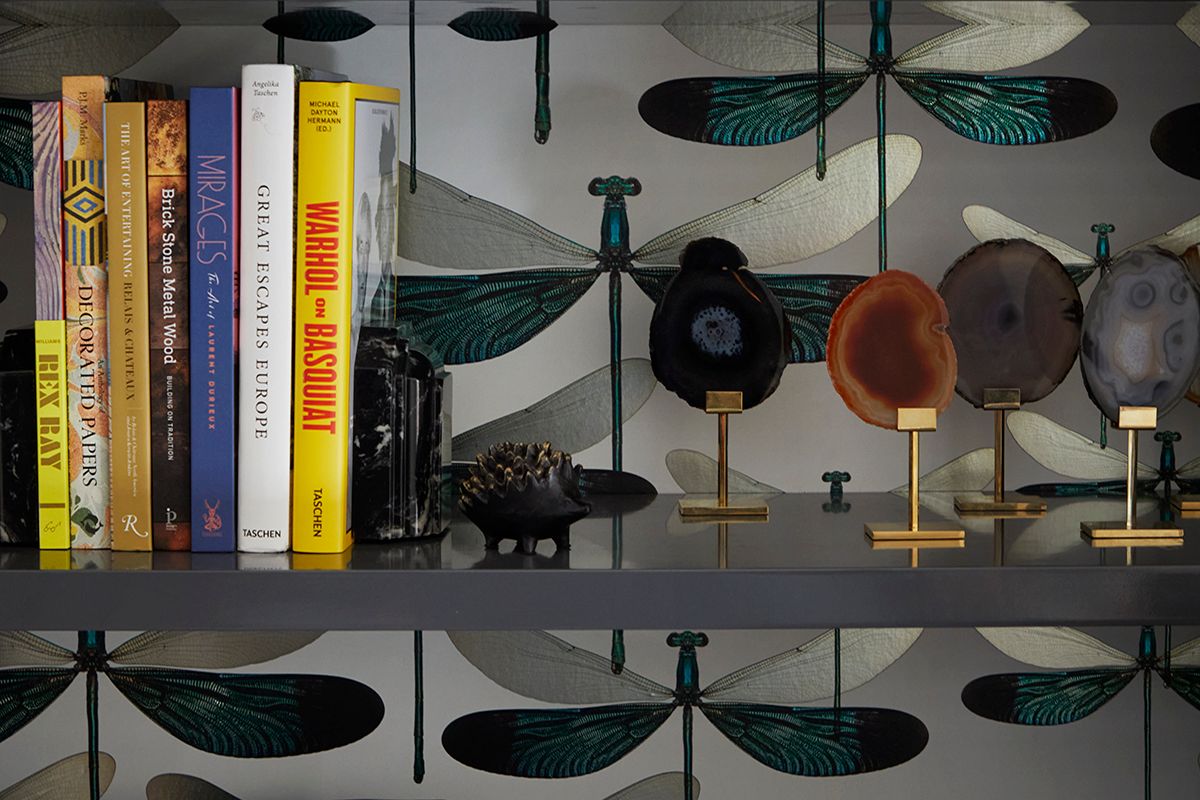
The clients for this Atherton, California, home asked designer Jay Jeffers (jayjeffers.com) to create environments layered with bold color and pattern. Among the extensive uses of wall coverings throughout the residence are built-in bookshelves flanking the fireplace of the family rec room. Senior designer Jenn Sharp sheathed the backs with a dragonfly pattern from Filepaper through De Sousa Hughes (desousahughes.com). “We love using wallpaper at the back of bookcases to add texture or, in this case, more pattern,” she says. “This dragonfly pattern is so fun and colorful and strikes just the right chord.” It also brings freshness and light to what are usually dark voids.
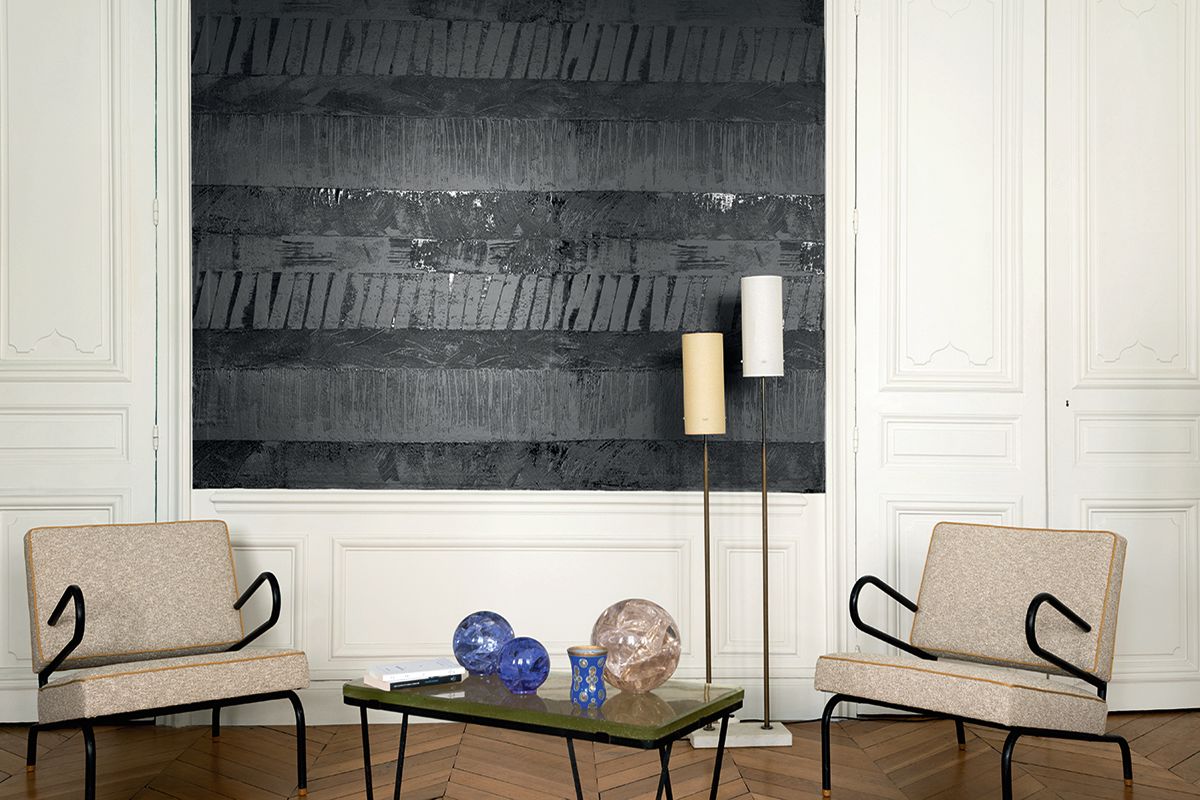
Some wallcoverings are works of art in themselves. Mouvements, new from Élitis (elitis.fr), employs 3D printing and laser etching to reproduce original patterns created by studio artists using brushes, combs, palette knives, and other tools to move around thick, chalky material. The resulting highly tactile, horizontal bands, further emphasized by the use of shiny and matte textures, create a lively rhythm that animates the surface like an abstract expressionist painting. By laying it into a recess that is then framed in crisp white molding, the piece’s artistic countenance becomes a striking presence in the room.
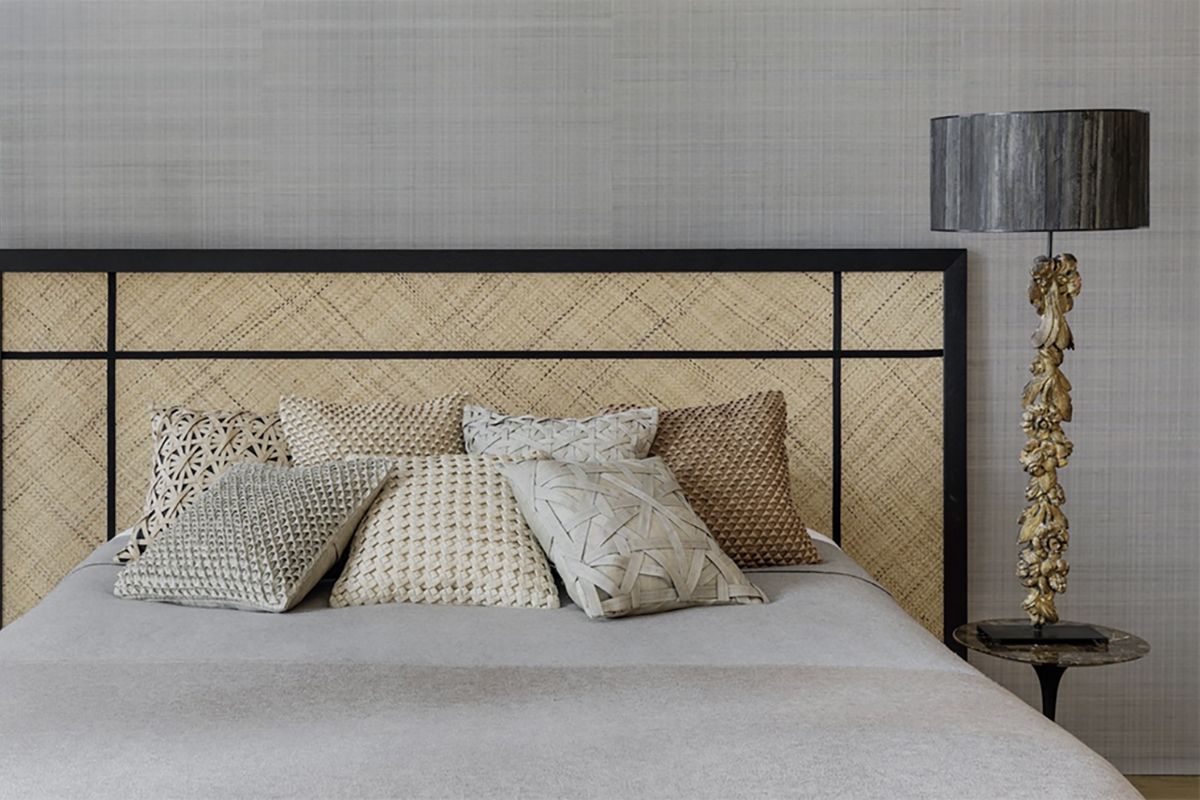
The Palm Tree collection of another French firm, CMO Paris (cmoparis.com), produces a 100 percent rattan weave crafted on traditional looms that can certainly be applied to walls, but also creates interesting accent textures in niches and flat areas of furniture such as a headboard (seen here), room screen, or tabletop. Any wallpaper, really, can be used in this way.